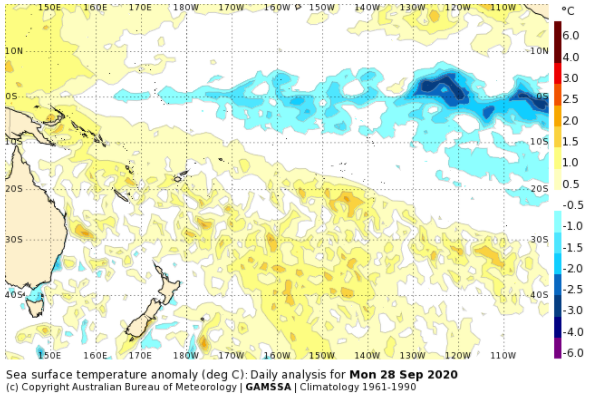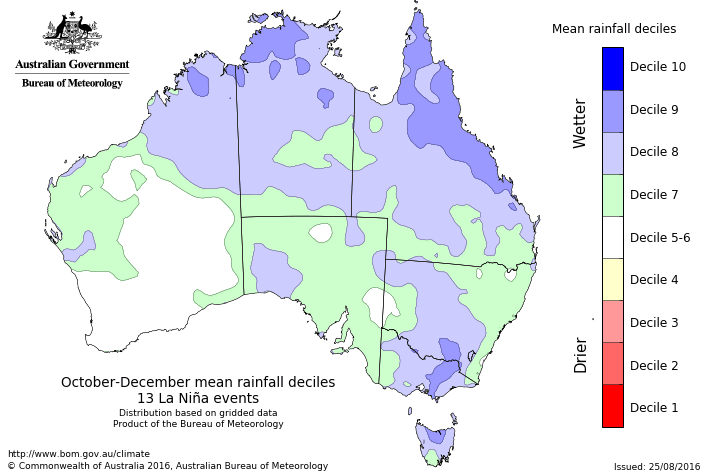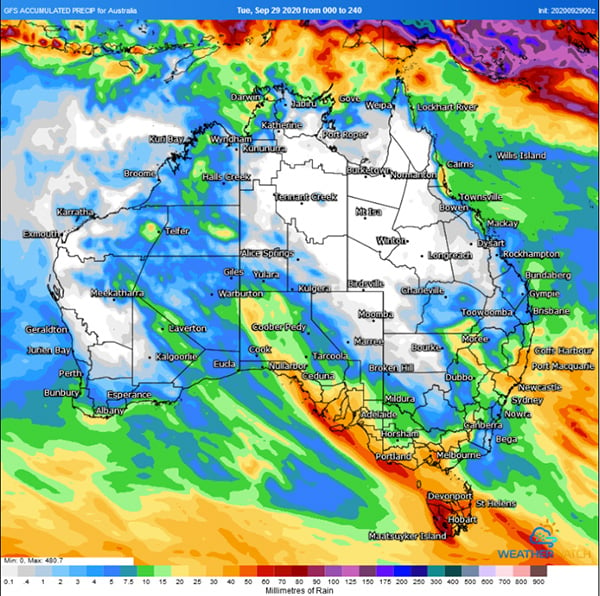The Bureau of Meteorology has officially declared a La Nina event is underway as of today, increasing the odds of wetter conditions over the next several months for Australia.
Earlier this month, both the Japanese and USA climate agencies had declared La Nina, however the criteria used by the Bureau of Meteorology (such as Sea Surface temperatures, trade wind strength, Southern Oscillation Index and equatorial cloudiness) are slightly more strict, with the thresholds finally being met. The 90-day SOI ending on September 27 was +8.1, typical of La Nina event (where sustained positive SOI values above +7 are indicative).
Image 1: Sea Surface temperature anomalies across the Pacific Ocean (Source: Bureau of Meteorology)

All climate models used by the Bureau suggest further cooling is likely, with La Nina thresholds likely to persist until at least January 2021.
During La Nina events, rainfall is typically higher over northern and eastern Australia, and maximum temperatures cooler than average due to increased cloudiness. This wetter signal is less pronounced over Western Australia, as the trade winds lose their moisture across land as they travel west. This wetter signal will increase the chances of storms, floods and widespread rain this spring and summer, a stark contrast to spring/summer 2019/2020.
Image 2: Mean rainfall deciles during October to December during La Nina years based off 13 events (Source: Bureau of Meteorology)

Image 3: Accumulated precipitation across the next 10 days from the GFS Model (Source: Weatherwatch Metcentre)
